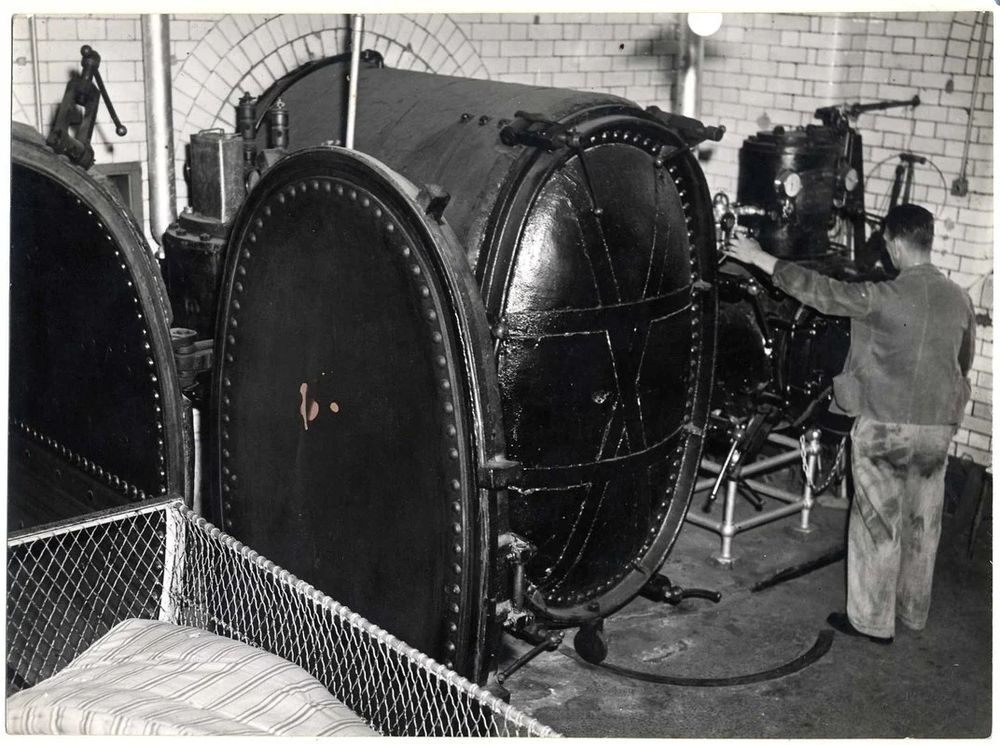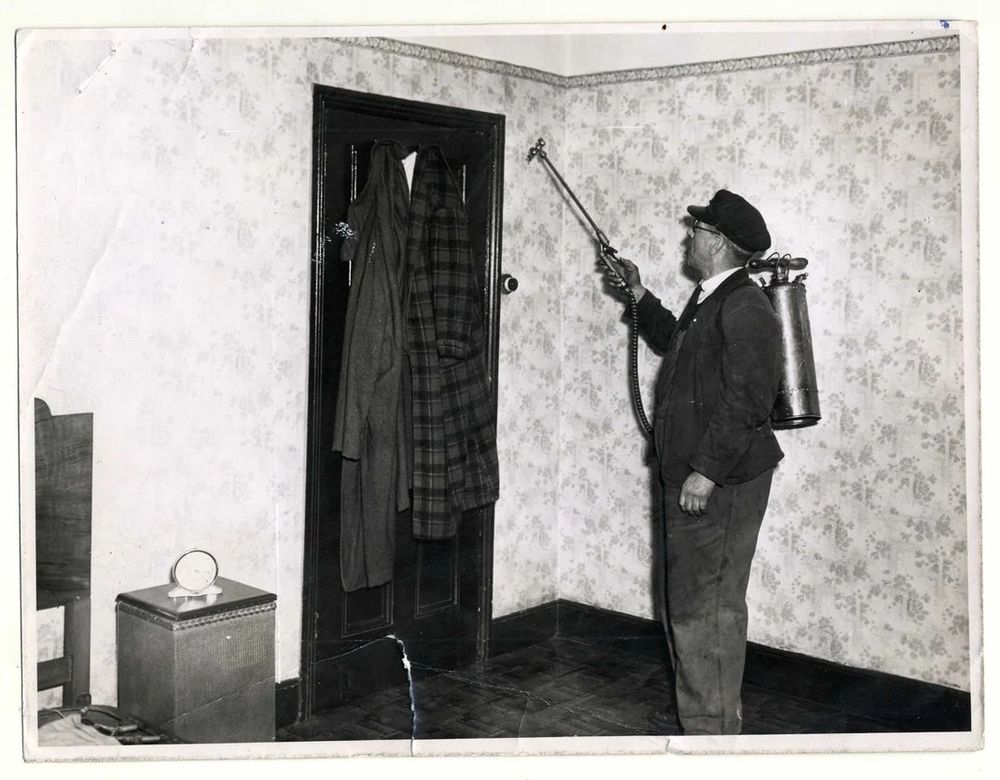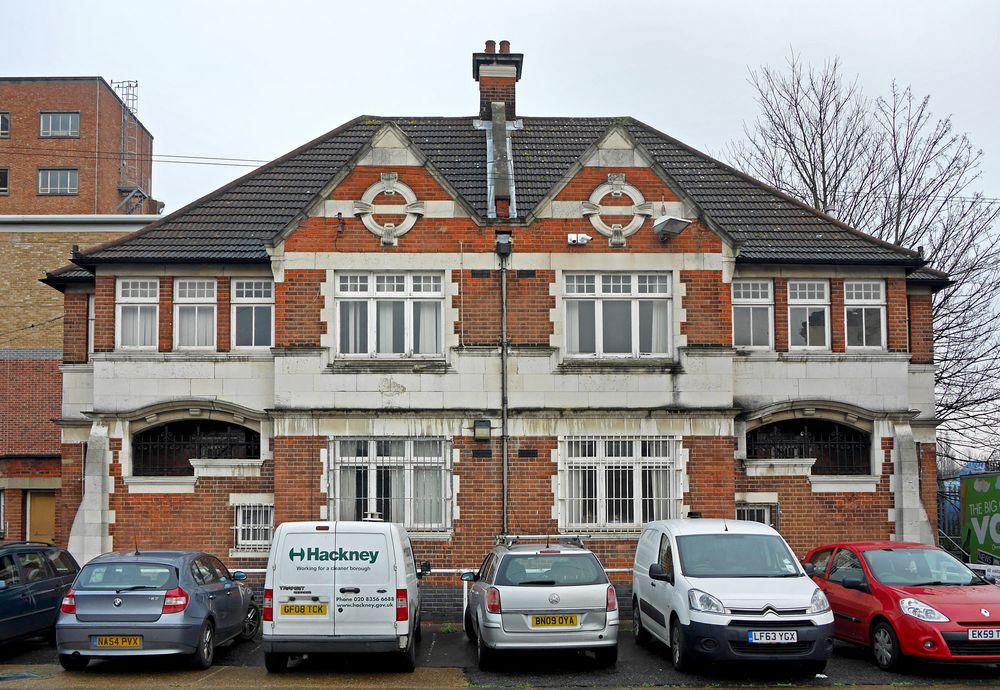When you came down with an infectious disease in the early 1900s in London, not only were you whisked away in a horse-drawn cart to the hospital, but the city seized your belongings and took them away to disinfect at the newly opened disinfecting station in Millfields Road, in the borough of Hackney.
The Hackney Borough Disinfection Station was one of a kind. When it was opened in 1901, Hackney’s medical officer of health proudly proclaimed: “With this station and shelter, I have no hesitation in stating that Hackney will be the most completely equipped district in London for dealing with infectious and contagious disease.”

Steam-cleaning a batch of clothes from infected patients. Photo: Hackney Archives
The need for such a facility was sorely felt because of the terribly overcrowded dwellings in Hackney and the frequent outbreaks of infectious diseases such as smallpox, diphtheria, tuberculosis, scarlet fever, measles and whooping cough. The local authorities have been carrying out disinfection of domestic premises in some capacity since at least 1866, when the government introduced a law that required them to administer disinfection equipment. The Public Health (London) Act of 1891 put further stress on this requirement, and placed a duty on the local authority to disinfect bedding, clothing etc. for free where a person had a notifiable disease.
A dedicated facility opened in 1893, complete with modern steam disinfecting equipment, but Hackney’s medical officer for health, John King Warry, didn’t stop there. Backed up by new national legislation, the Cleansing of Persons Act 1897, that permitted local authorities to spend what it liked to cleanse people and premises “infested with vermin”, he campaigned for the creation of a state-of-the-art disinfecting and disinfesting station that included accommodation for whoever required it.

Vehicles and staff engaged in disinfectation in 1935 near the rear entrance to the disinfecting chamber. Photo: Hackney Archives
The facility consisted of three buildings, housing the Disinfecting Station, a three-bedroom caretaker’s lodge and a shelter house consisting of four one-bedroom flats for people who were being disinfected to stay the night. When infected people arrived at the station, they were made to strip and given sulphur baths intended to kill lice, fleas, head lice and scabies and then stayed in the shelter house overnight, while their clothing and beddings were cleansed using high pressure steam and formaldehyde to kill germs and vermin. Items such as furniture that were beyond cleaning were incinerated on site. At the same time, teams from the station visited the homes and sprayed formaldehyde disinfectant all around them.
During the first year of operation, the Hackney Borough Disinfection Station fumigated more than 2,800 rooms, and disinfected over 24,000 articles of furniture, bedding and clothing. Despite the busyness of the facility, the shelter house was seldom used. In 1902, only 97 people stayed overnight, and by 1905 the borough had to advertise the existence of the apartments. Demand for shelter was so low that from the 1930s, the shelter house was turned into staff accommodation for people working in the department of the medical officer of health.

Photo: Hackney Archives

A worker sprays disinfectant and prepares to remove bedding for steam disinfection at the Millfields Station in 1951. Photo: Hackney Archives
In 1934, the new Medical Officer of Health G. H. Dart, built four drive-in fumigation and airing shed at the Hackney station as part of the public health department’s slum clearance and re-housing program. The furniture and other belongings of displaced families were loaded into trucks and driven inside these sheds, where they were fumigated using Zyklon B (hydrogen cyanide gas)—the same chemical that the Nazis used in the death camps. Following ventilation and fumigation, the furniture was then returned to the owners in their new flat.
During the Second World War, the bathing facilities were enlarged to cope with an outbreak of scabies, that was common because people would crowd together in bomb shelters. After the war, the station was used to disinfect donated clothes to be sent overseas, and later to disinfect imported textiles. The incinerators were used to burn infected food stuff. The station was also used to disinfect library books, because books were thought to be vectors of diseases.
The station was last used in 1984 to disinfect head lice from school children.
The former buildings of the Disinfection Station still stands on Millfields Road, tucked between a waste depot and an electricity substation close to Hackney’s eastern boundary. After years of abandon and decay, the station was mothballed in the hope of safeguarding it for the future.

Hackney Disinfecting Station today. Photo: Alan Denney/Flickr
References:
# Jo Caird, This London Building Tells the Story of a Century’s Worth of Disease and Epidemics, Smithsonian Magazine
# Tim Walder, Hackney Disinfecting Station, Hackney Society
# Emma Bartholomew, How bed bugs, vermin and fleas were zapped in Hackney’s disinfecting station, Hackney Gazette



Comments
Post a Comment